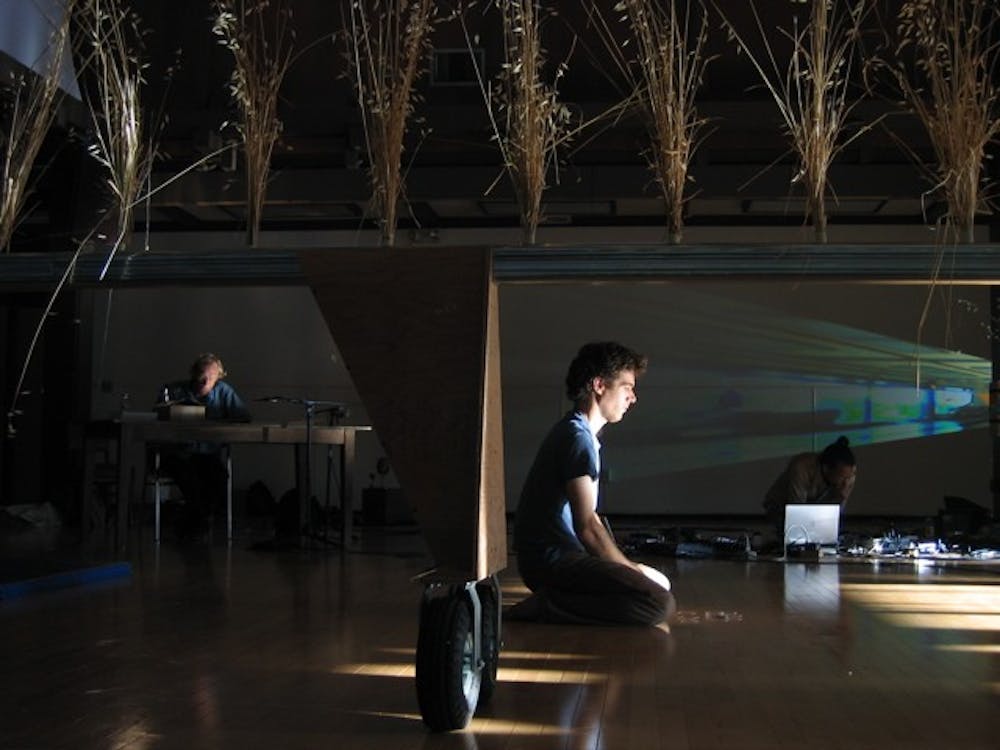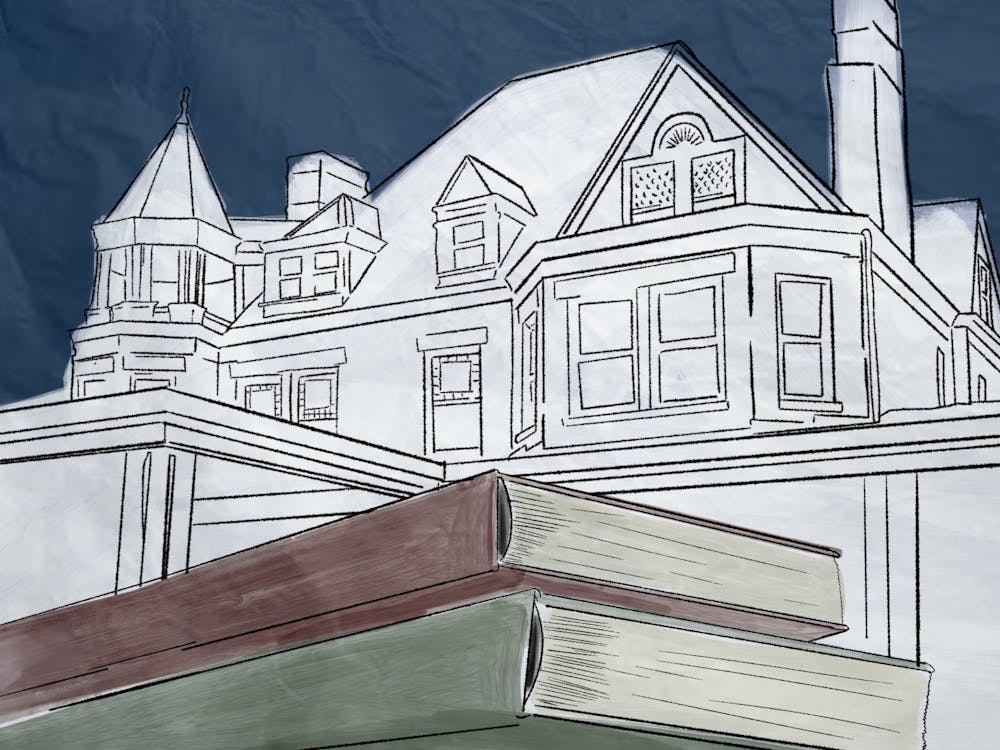Entering the sparse auditorium of Old Cabell Hall last Friday, the audience did not know what to expect. A grand piano, a tangled bundle of electrical cords, a laptop and a projector decorated the stage. As the audience sunk into the chairs, preparing for the TechnoSonics concert series, there seemed to be mutual feelings of confusion and excitement. Ted Coffey, associate professor of composition and computer technologies in the McIntire Department of Music, introduced the upcoming artists, and the night began.
The opening act was Seunghye Kim on the piano, performing a piece by Judith Shatin. As Kim sat down to play the piano, giving the scorekeeper a nod, a male voice sounded, stating, “Where is the crack, the small crack?”
It was then that the audience realized this concert would be an evening to remember. Kim continued to play a haunting melody to accompany the man’s reading of a poem entitled “Plain Song.” However, there was nothing plain about Kim’s performance. She played the pauses and used the minor chords to her advantage, holding the pedal down long enough for the poignant notes to stick in listeners’ minds. As the male voice spoke and the pianist played, the two means of expression collided, and soon the instrument and the voice were one.
The mood shifted as the piano was pushed off of the stage and a four-piece ensemble consisting of three cellists and a saxophone player walked on. They used a computer to create a larger sound and mimic several of their own instruments. The additional cellos vastly contributed to the strong reverberations that the ensemble longed for. The piece was called “Spectral Shift of a Distance Form.” The concert program described the music as an exploration of “the spectral and spatial evolution of a sonic form,” but the movement could have been mistaken for the brainstem auditory evoked response test for dogs. Piercing sounds rang throughout the auditorium much longer than they were welcome.
The night was redeemed for the now faint of hearing and the performers’ auditory skills were showcased when a new group took the stage. This mixed ensemble consisted of cellos, a flute, a clarinet, an instrument that resembled the panpipe, and a vocalist. The group synced their instruments to a digital game, projected for audience members to see, in which the matching of tone and pitch, as well as length and vibrato, controlled the avatar’s survival throughout the video game. The audience watched and cheered on the musical improv group as they attempted to steer the avatar towards different borders and boundaries, reaching higher levels each time.
As the night went on, others presented experimental projects revolving around human collaboration as well as a musically developed representation of the earthquakes, tsunamis and the nuclear disaster in northeastern Japan in 2011. The evening was one of contemplation and admiration where audiences had the unexpected opportunity to truly witness the alliance between music and technology.





